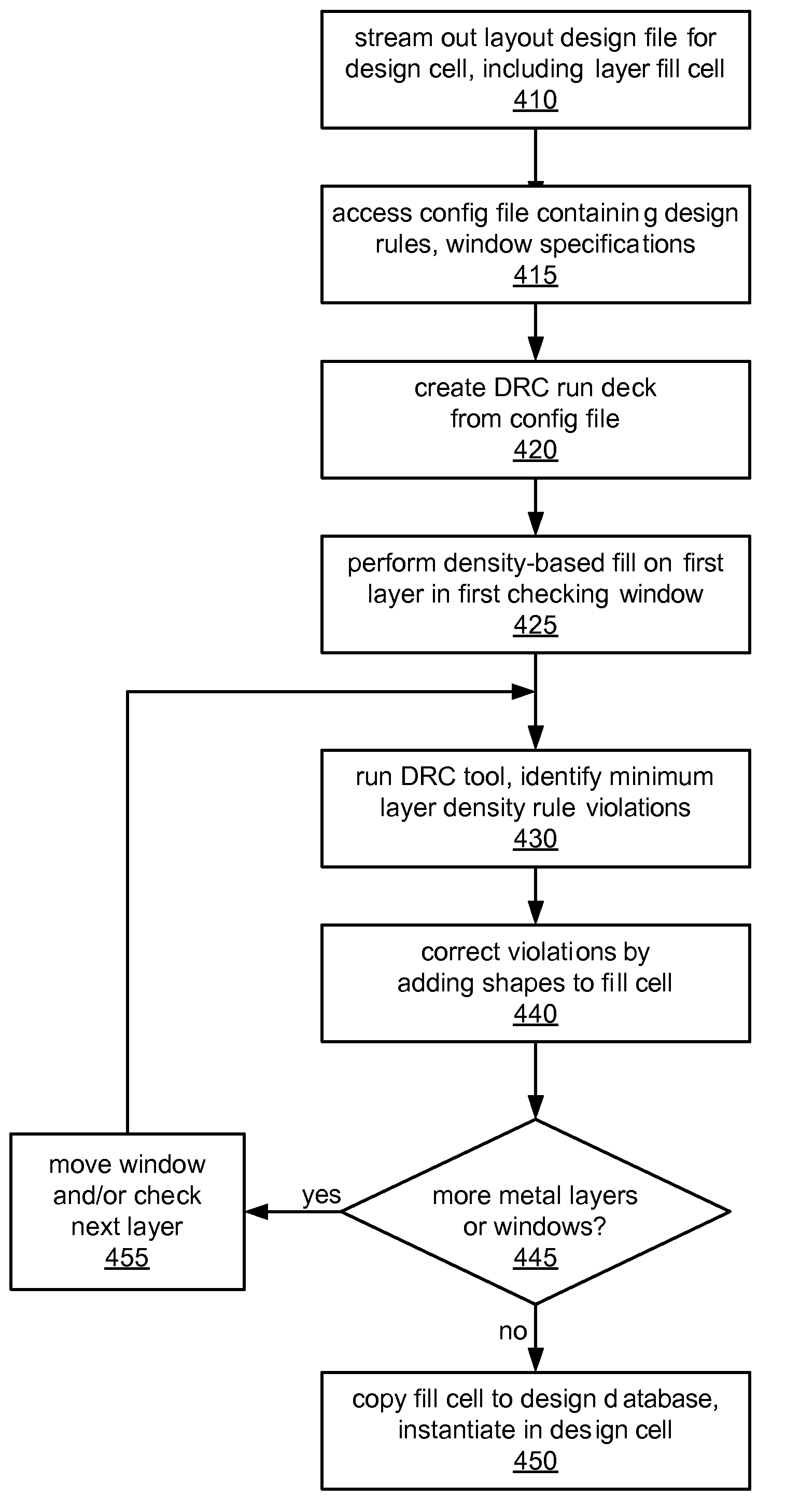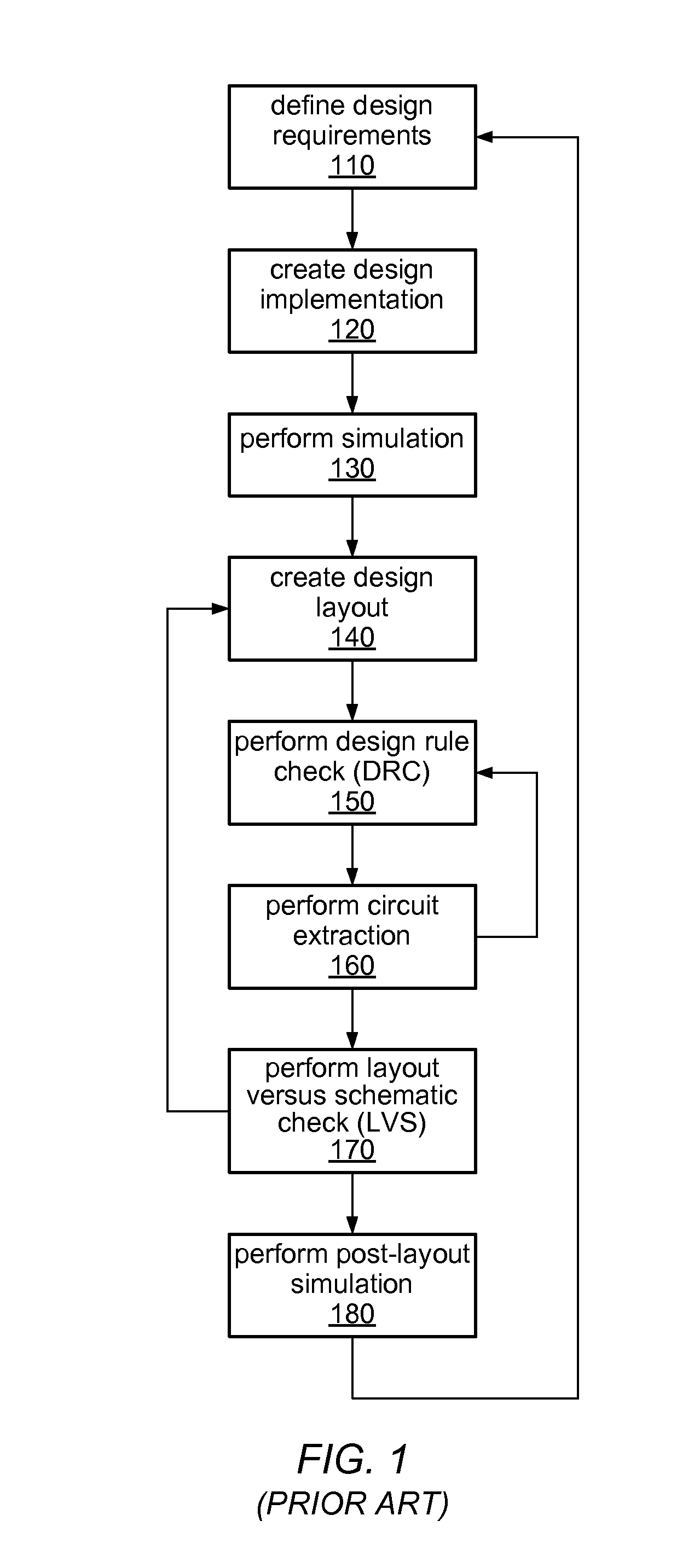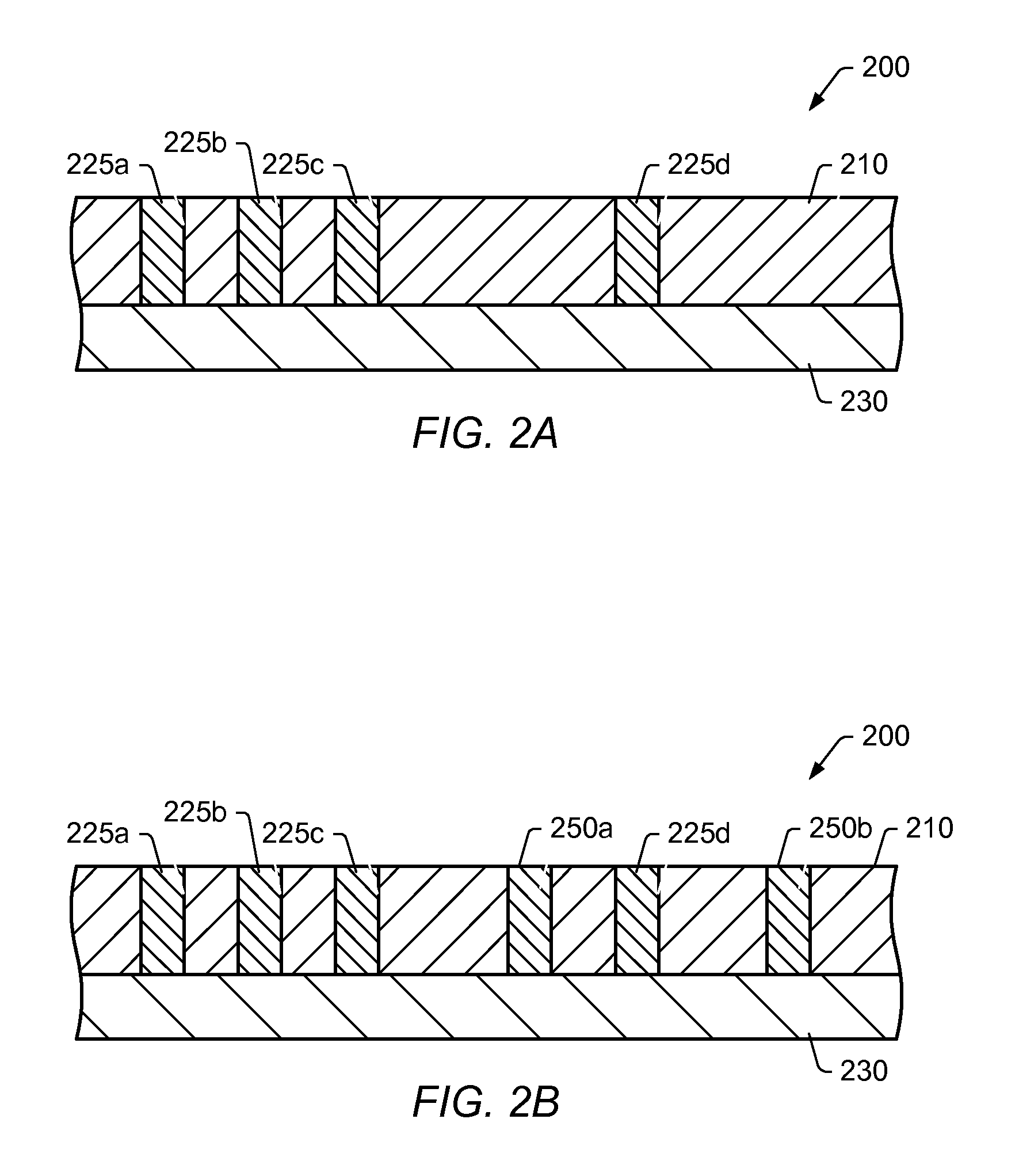Density-Based Layer Filler for Integrated Circuit Design
a density-based layer filler and integrated circuit technology, applied in the field of density-based layer filler for integrated circuit design and computer-aided design layout, can solve the problems of complex and time-consuming process of integrated circuit design, complex design process, and large number of dummy shapes added to a design, so as to reduce the risk of process yield and reduce the size of the layout databas
- Summary
- Abstract
- Description
- Claims
- Application Information
AI Technical Summary
Benefits of technology
Problems solved by technology
Method used
Image
Examples
Embodiment Construction
[0028]In modern deep submicron processes, chemical-mechanical polishing (CMP) may be performed during wafer processing to achieve planarity (i.e., to smooth the upper surface of the wafer between some processing steps.) This polishing is most effective when the density of features on one or more layers in the area being polished is relatively uniform. For example, uneven erosion due to CMP may be avoided by distributing features as evenly as possible across the design, rather than by having some densely-populated regions and other sparsely-populated regions on the same die. In addition, delamination or lifting of metal during CMP may be avoided when metal density is relatively uniform across the area being polished.
[0029]For these and other reasons, deep submicron processes may include design rules specifying the minimum allowed density of a given design layer within a specified area of a design. The minimum density may be heavily dependent on the particular process technology (e.g....
PUM
 Login to View More
Login to View More Abstract
Description
Claims
Application Information
 Login to View More
Login to View More - R&D
- Intellectual Property
- Life Sciences
- Materials
- Tech Scout
- Unparalleled Data Quality
- Higher Quality Content
- 60% Fewer Hallucinations
Browse by: Latest US Patents, China's latest patents, Technical Efficacy Thesaurus, Application Domain, Technology Topic, Popular Technical Reports.
© 2025 PatSnap. All rights reserved.Legal|Privacy policy|Modern Slavery Act Transparency Statement|Sitemap|About US| Contact US: help@patsnap.com



